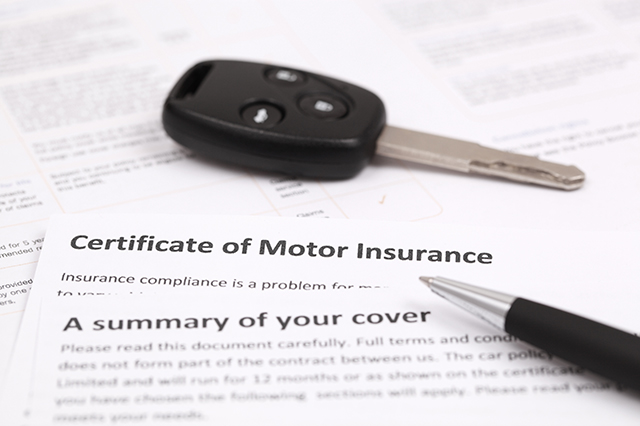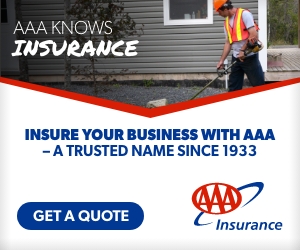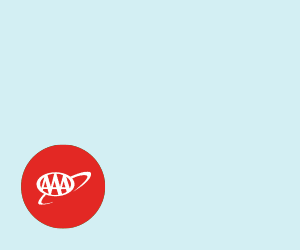At some point during the process of setting up auto insurance or making a claim, most of us consult an auto insurance terms glossary. Then, it probably goes something like this: “Wait, comprehensive coverage doesn’t mean full coverage?”
But don’t worry. As always, AAA has you covered. This guide will help you understand auto insurance terms so you can communicate effectively with your insurance agent.
Auto Insurance Terms Glossary
Premium
The amount that you pay for auto insurance coverage is known as the premium. Even though you may opt for more than one type of coverage, liability and collision for example, you will be charged one amount for your overall policy. Lapsing on payments jeopardizes the protection offered by your policy so make sure to take care of invoices promptly. Companies will offer multiple plans so you can determine whether you pay your premium in one lump sum or installments.
A variety of factors affect the amount of your premium including your zip code, age, gender, marital status, car model and driving record.
Deductible
In the case of an accident, your out of pocket costs are known as the deductible. Once this amount is paid, your insurance company will cover the remaining cost of a claim. Let’s say your deductible is $500, and your car incurs $3,500 in damage due to being hit by a deer. You will be responsible for paying $500, and your insurance company will pay $3,000 in repair expenses.
Think of deductibles and premiums being in a see-saw balance. Some plans have no deductible, but they are associated with a higher premium. The higher amount you pay for your insurance coverage helps you to avoid the unanticipated expense of deductibles should your car be vandalized or involved in an accident, flood or other devastating event.
If you opt for a lower premium, you have a higher deductible. Your payments will be lower but you may owe $500, $1,000 or more if you make a claim.

Liability Coverage
There are no federal laws that require drivers to have liability coverage, but most states mandate minimum liability coverage. The two components of this type of auto insurance are bodily injury liability and property damage liability. If an accident causes physical injuries or damages another person’s vehicle or property, this insurance will help cover medical costs, lost income, and property repair or replacement.
Comprehensive Coverage
Of all the phrases in an auto insurance terms glossary, this one generally causes the most confusion. Despite its name, comprehensive coverage does not mean you have full coverage for any circumstance. Comprehensive auto insurance covers damages caused by storms, floods, fires, and other natural causes including contact with wildlife. It also covers costs if your car is vandalized or stolen.
If your car is leased or financed, your lending institution will require comprehensive coverage in addition to collision and liability. Drivers who own their vehicle can opt to add comprehensive coverage to their policy, but it is not required by state laws.
Collision coverage
As its name suggests, collision coverage kicks in when your car is damaged or totaled from contact with another vehicle or a non-moving object such as a fence, streetlight, or tree. If you get into an accident, this is the coverage that pays for repairs to your own vehicle. Banks and lending institutions require collision insurance for leased and financed vehicles.
Personal Injury Protection or No-Fault Coverage
Some states have no-fault insurance, which means that insured drivers can have costs covered by their own insurance company regardless of who may have caused an accident. These states require PIP coverage, which pays the medical expenses, lost wages, and other damages incurred by an insured driver, passengers, and others who may have been injured. This type of coverage is not available in all states.
The advantage of PIP coverage is that you can proceed with getting expenses covered without waiting for the parties’ insurance companies to settle who was responsible for an accident. Before deciding on the amount of coverage you need, make sure to review the post-accident benefits of your health insurance policy.
Limit
While you don’t need an auto insurance terms glossary to understand the meaning of a limit, it has a specific meaning in the context of your vehicle coverage. In addition to the specifying your premium and deductible, each policy sets a limit for the maximum amount your insurance company will pay for a specific claim. Policies with higher limits will be more expensive but offer more protection in the event you are involved in a costly accident.
States have different minimum standards that dictate how much auto insurance you need for bodily injury, property damage, personal injury protection and uninsured/underinsured motorist protection. Many states require bodily injury and property damage liability.
Industry terms and jargon adds to the frustration of dealing with auto insurance quotes and claims. If you don’t understand a term used by your insurance agent make sure to ask for clarification. Don’t let a confusing phrase prevent you from getting the coverage or assistance you need.
Do you know if you have the right coverage? Visit AAA.com/Insurance to make sure you’re covered.

















